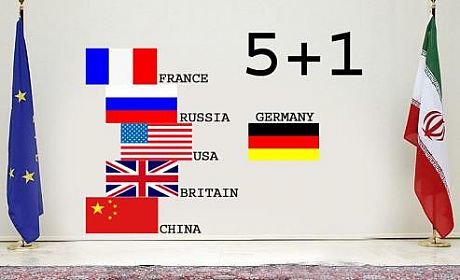
Critics of the Iran nuclear deal, formally known as the Joint Comprehensive Plan Of Action (JCPOA), argue for withdrawal based mostly on issues peripheral to JCPOA.
For example, critics argue Iran has disappointed U.S. expectations that Iran would no longer support international terrorism or work to destabilize neighboring countries or threaten the United States.
While these were U.S. expectations, there is no legally binding language in the JCPOA requiring Iran to change its international behavior.
Critics of the JCPOA also argue for U.S. withdrawal because Iran continues to develop long-range ballistic missiles – which are militarily practicable only with nuclear warheads. Critics note such missile development violates the “spirit” of the JCPOA.
Yet again, the JCPOA does not ban missile testing by Iran in any legally binding language.
Indeed, a better legal reason for withdrawing from the JCPOA than the arguments above is that the Iran nuclear deal is not legally binding at all. The JCPOA is not a treaty, but an executive agreement, never submitted to the U.S. Senate for advise and consent, and ratification, as constitutionally required.
Preventing Iran, the world’s leading sponsor of international terrorism, from developing nuclear weapons is vital to U.S. and global security. Yet the JCPOA is not legally or instrumentally capable of stopping an Iranian atomic bomb.
Therefore, President Trump is obligated to terminate the fiction that is the Iran nuclear deal.
But the best argument for abandoning JCPOA is rarely made, that Iran is probably in material breach of the letter and main purpose of JCPOA because, like its ally North Korea, Iran has almost certainly developed nuclear weapons clandestinely.
The U.N. International Atomic Energy Agency (IAEA) reports inspecting Iran’s nuclear program produced compelling evidence Iran probably developed nuclear weapons over a decade ago.
For example, IAEA’s 2011 report “Implementation of the NPT Safeguards Agreement and Relevant Provisions of Security Council Resolutions in the Islamic Republic of Iran” is too timorous to say so explicitly, but not only proved Iran has a nuclear weapons program – it is a “smoking gun” that Iran already has the bomb.
A cautious analyst can reasonably infer from IAEA reporting that – prior to 2003 – Iran already had all the knowledge and components needed to build atomic bombs. For example, more than 14 years ago:
- Iran procured equipment necessary for nuclear weapon development.
- Iran conducted hydrodynamic experiments that, according to the IAEA report “are strong indicators of possible weapon development.”
- Iran cast and shaped uranium metal into hemispheres for a nuclear implosion device; a sophisticated nuclear weapon design.
- Iran verified the design of a nuclear weapon with non-fissile explosive testing in a containment chamber. During the Manhattan Project of World War II, at this stage the U.S. was 16 months from an atomic bomb.
- Iran developed and tested exploding bridgewire detonators, necessary to an implosion nuclear weapon. During the WWII Manhattan Project, at this stage the U.S. was 6 months from an atomic bomb.
- Iran manufactured neutron initiators which are used to start a fission chain-reaction in a nuclear weapon.
- Iran drafted 14 different workable designs for a nuclear weapon to fit inside the re-entry vehicle for the high-explosive (HE) warhead of Iran’s Shahab-3 medium-range missile. Since designing a nuclear weapon is a lot harder than changing the shape of a re-entry vehicle – obviously Iran was trying to hide a nuclear warhead by disguising it as the HE warhead of the Shahab-3.
- Iran developed fusing systems for a nuclear missile warhead to perform a ground-burst or high-altitude burst above 3,000 meters.
The Congressional EMP Commission found in 2002 Iran apparently performed at least 5 fusing tests of the Shahab-3 at high-altitudes – explicable only as practicing nuclear electromagnetic pulse (EMP) attacks. For more evidence Iran already has nuclear weapons see my article “Iran: The Worst Deal” in Family Security Matters, Oct. 3, 2015.
Former senior intelligence and national security officials of the Reagan and Clinton administrations warn Iran probably already has nuclear weapons, including: Ambassador R. James Woolsey, former director of the CIA; Fritz Ermarth, former chairman of the National Intelligence Council (NIC); Ambassador Henry Cooper, former director of the Strategic Defense Initiative (SDI); and Dr. William Graham, former President Ronald Reagan’s science adviser and chairman of the EMP Commission.
Israeli intelligence officers warned that Iran probably already has atomic bombs, according to Joshua Davidovich, in The Times of Israel, Sept. 27, 2013.
In June of 2002, when the West first learned about Iran’s clandestine nuclear weapons program from Iranian dissidents (not from the U.S. intelligence community), Russian General Yuri Baluyevski, deputy chief of the General Staff, declared, “Iran does have nuclear weapons. These are non-strategic nuclear weapons.”
Like President Clinton’s nuclear deal with North Korea, that pretended Pyongyang’s clandestine nuclear weapons program was frozen, President Obama’s JCPOA will enable Iran to clandestinely build and improve nuclear weapons and missiles so the fact of a nuclear-armed terror-state will become irreversible.
So why is the best argument against JCPOA rarely used? Because what is still President Obama’s highly politicized and error-prone intelligence community insists Iran does not have nuclear weapons and JCPOA will delay an Iranian atom bomb.
We don’t need JCPOA. We do need a reformed intelligence community.
Dr. Peter Vincent Pry is Executive Director of the Task Force on National and Homeland Security and Director of the U.S. Nuclear Strategy Forum, both Congressional Advisory Boards, and served on the Congressional EMP Commission, the Congressional Strategic Posture Commission, the House Armed Services Committee, and the CIA. He is author of Apocalypse Unknown: The Struggle To Protect America From An Electromagnetic Pulse Catastrophe and Electric Armageddon, both available from CreateSpace.com and Amazon.com



Leave a Reply
You must be logged in to post a comment.